Craving a steamy bowl of hot noodle soup? This heartwarming Beef Udon is my go-to Japanese comfort dish. My recipe serves up tender sliced beef on top of thick, chewy udon noodles in a savory broth. What’s not to love?
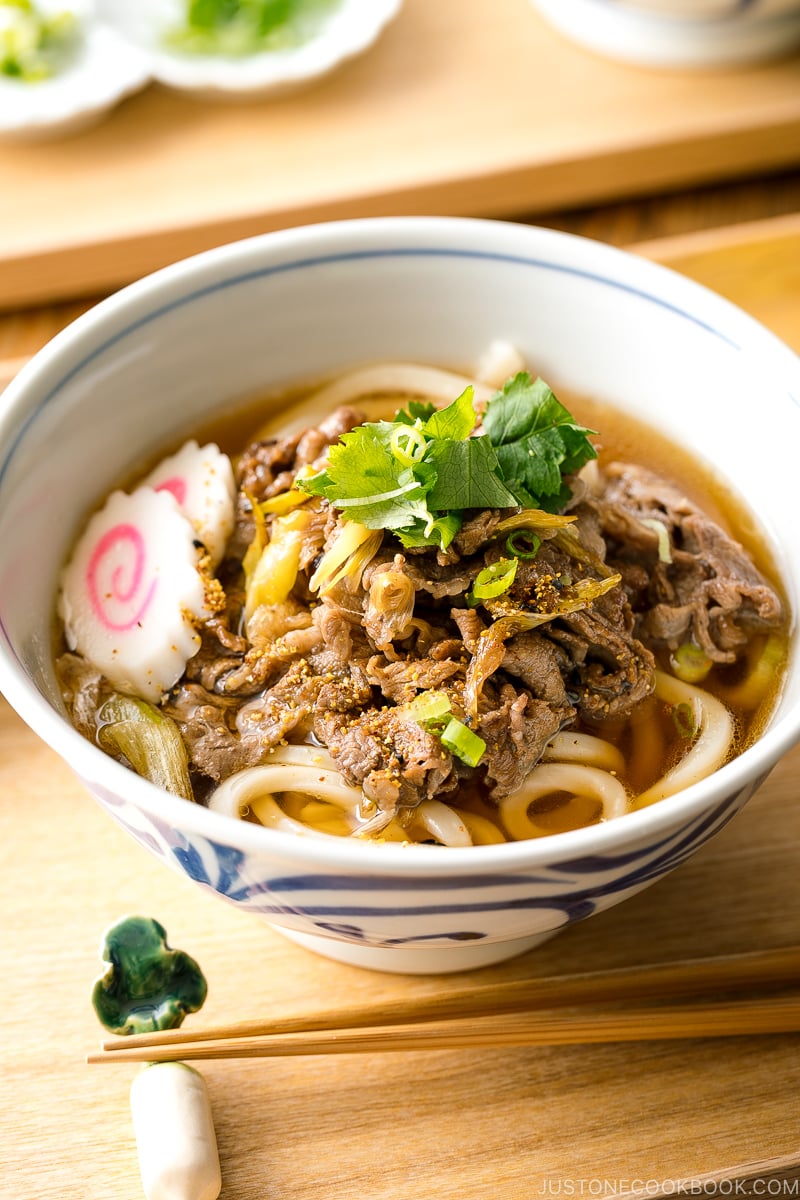
When my family visited Takayama in Japan in 2015, we had the opportunity to enjoy this warm udon noodle soup with Hida beef. Made of freshly cooked udon noodles in a fragrant hot soup, topped with sweet juicy sliced beef, the beef udon was delicious and perfect. Today, we are going to recreate this Beef Udon (肉うどん) back in our own kitchen.
Despite its simplicity, this noodle soup is packed with flavor! The savory broth, seasoned tender beef, caramelized scallion, and chewy smooth noodles — that’s all you really need for a well-composed bowl of noodle soup.
Table of Contents
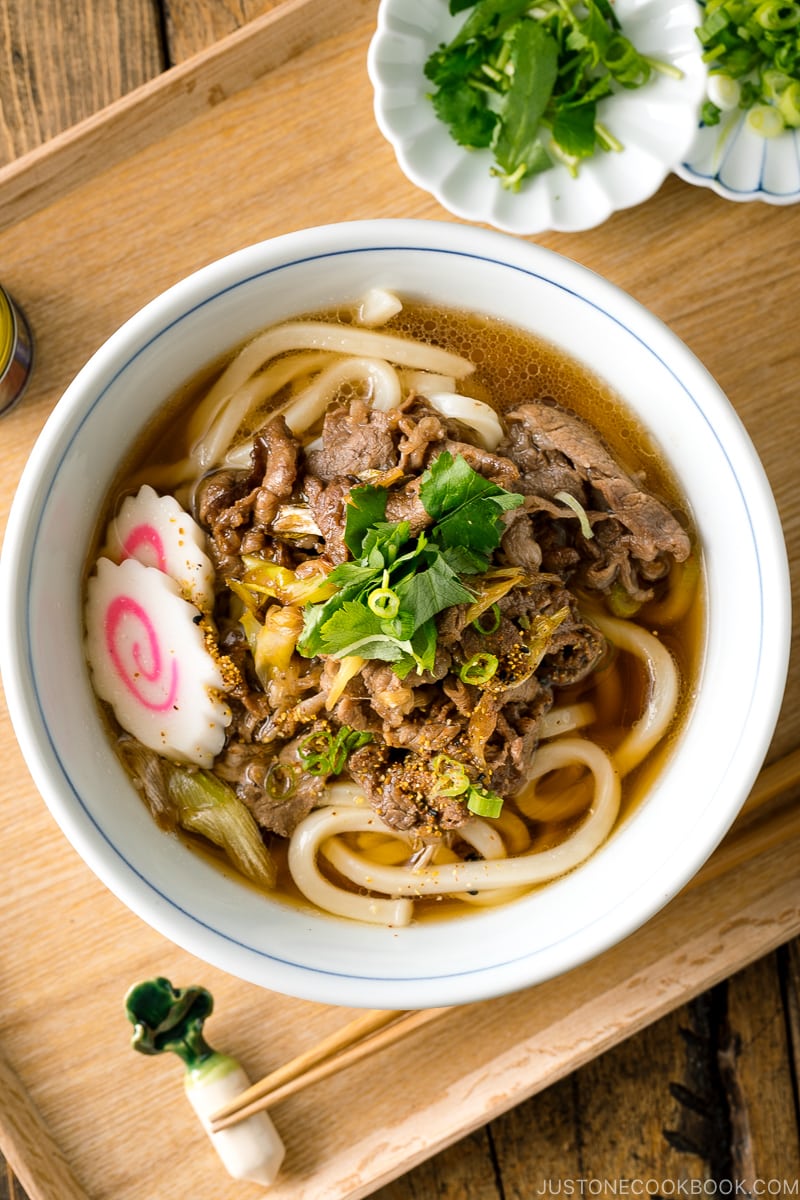
Ingredients for Niku Udon
With basic Japanese condiments, you can easily make this delicious noodle soup at home.
- Udon noodles – Can be frozen, fresh, or dried. Wish to learn more about this noodle? Click here.
- Thinly sliced beef – It works great with “shabu shabu beef” from a Japanese market, but you can always slice your own.
- Negi (Japanese long onion) – You can use green onion as a substitute.
- Dashi (Japanese soup stock) – More about it below.
- Condiments: soy sauce, sake, mirin, and sugar.
- Optional toppings: narutomaki (fish cake), green onion, mitsuba (Japanese herb), etc.
How to Make the Best Beef Udon
- Prepare dashi broth and add the seasonings to make udon soup broth.
- Stir fry the negi (or green onion) and thinly sliced beef. Season them with soy sauce and sugar.
- Cook udon noodles according to the package instructions and drain well.
- Assemble udon noodles and broth in individual bowls. Top with cooked beef and other toppings of your choice.
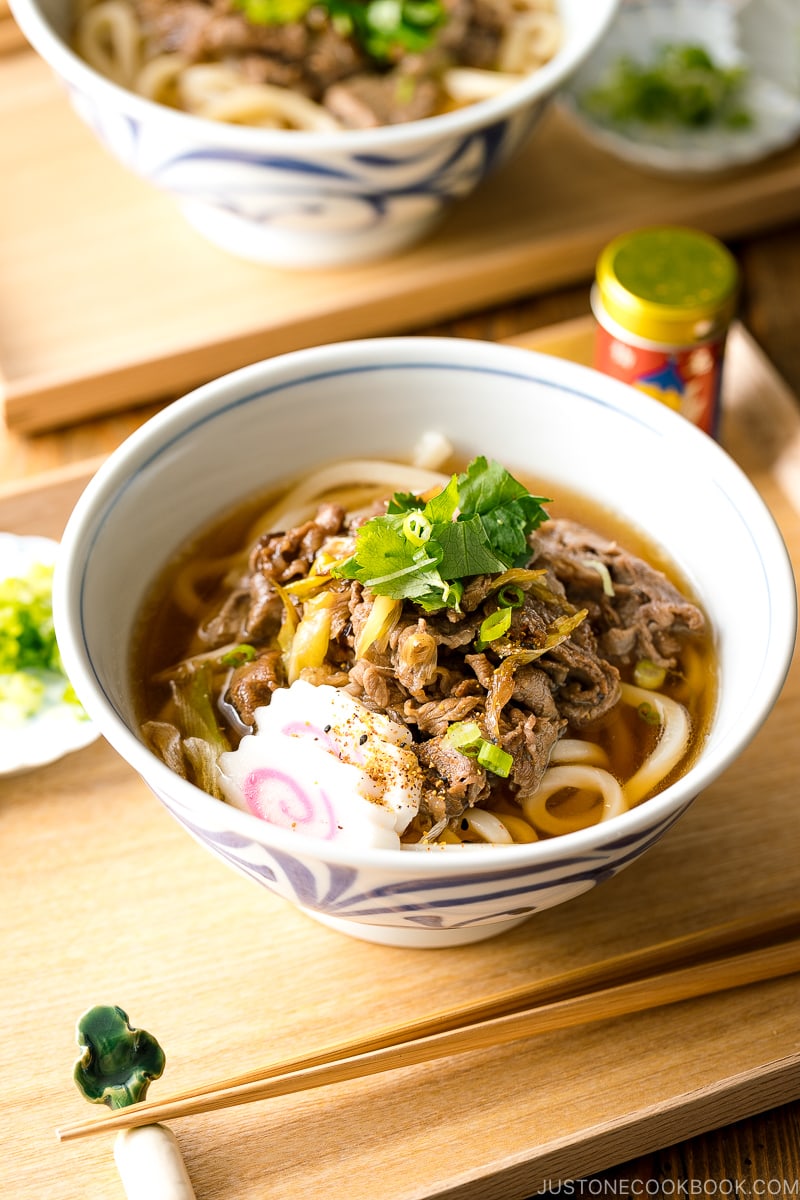
3 Ways to Make Dashi
The key to the most flavorful broth for beef udon is dashi — the quintessential Japanese soup stock. Dashi is clear, delicate, mildly sweet, and full of umami. It is the base flavor for a superb bowl of beef udon.
For those who had never made dashi, it might sound intimidating. But trust me, it’s easier to make dashi than any other broth out there; all you do is drop the ingredients in water and let them steep. That’s it!
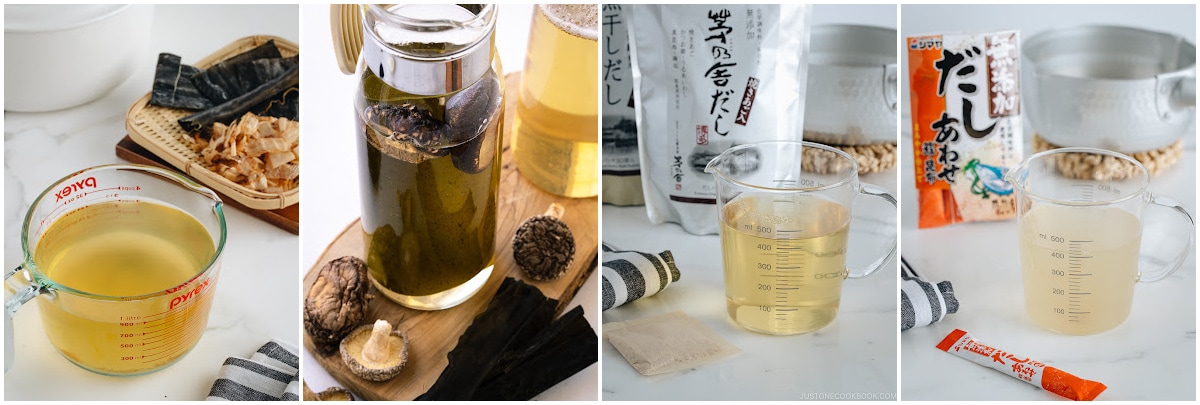
Just in case you’re new to making dashi, here are 3 ways to make dashi:
- Homemade dashi — You can make standard Awase Dashi by steeping kombu (edible kelp) and katsuobushi (dried bonito flakes) in water. If you’re vegetarian/vegan, make Vegan Dashi with kombu and dried shiitake mushrooms. [20 minutes]
- Dashi packet — A dashi packet is the best shortcut method that I use often. Similar to making tea, you steep the dashi packet in water and cook for a couple of minutes. Despite its quick method, the flavor of this dashi is pretty good. [5 minutes]
- Dashi powder — Dashi powder is my least favorite method due to its lack of flavor, but you can make a quick dashi with just dashi powder and hot water. [1 minute]
If you want to learn more about dashi, check out The Ultimate Dashi Guide, where I talk about 6 different types of dashi and the above 3 methods in detail.
Make Homemade Udon Noodles
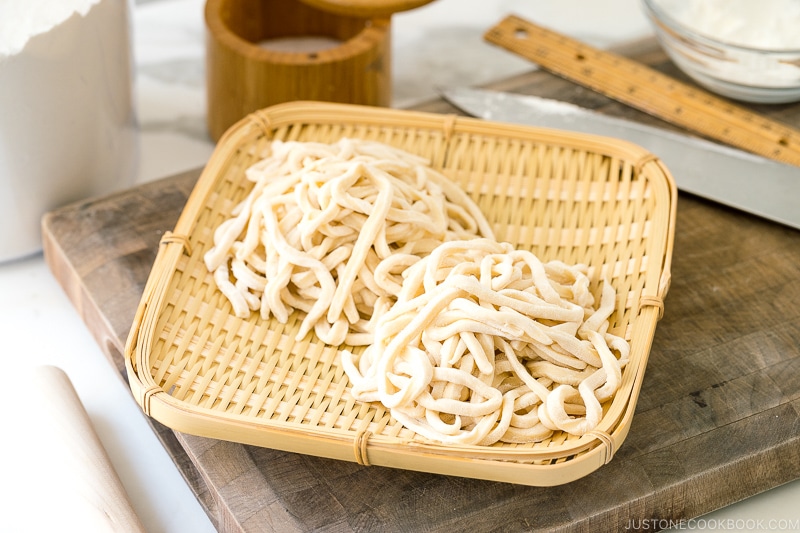
If you have extra time, I recommend making Homemade Udon Noodles from scratch! All you need is flour, water, and salt.
The texture of the dough is much firmer than bread dough, so traditionally, the Japanese used their feet to knead the udon noodles. Isn’t it fun? Check out the post to see how we make udon noodles in Japan.
Other Delicious Udon Noodles
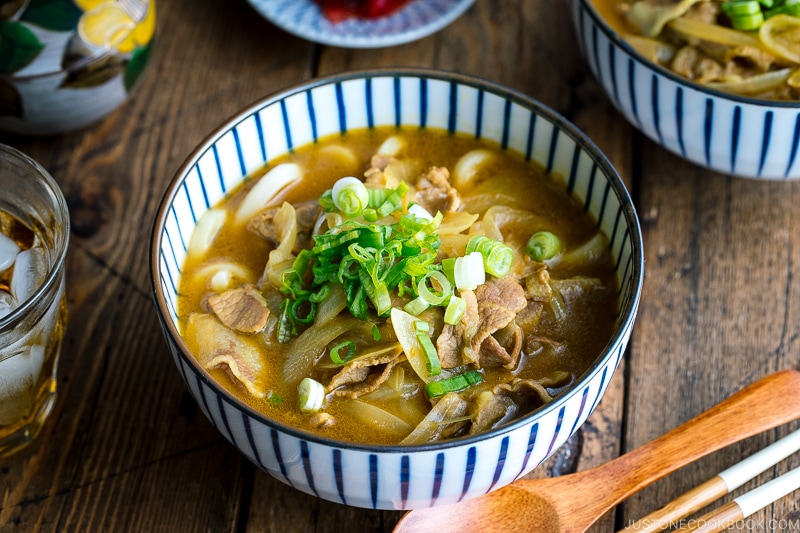
Don’t miss out on these delicious recipes with udon noodles:
- Yaki Udon (Stir-Fried Udon Noodle)
- Curry Udon
- Nabeyaki Udon (Hot Pot Style Udon Noodle Served in Donabe)
- Kitsune Udon
- Miso Nikomi Udon
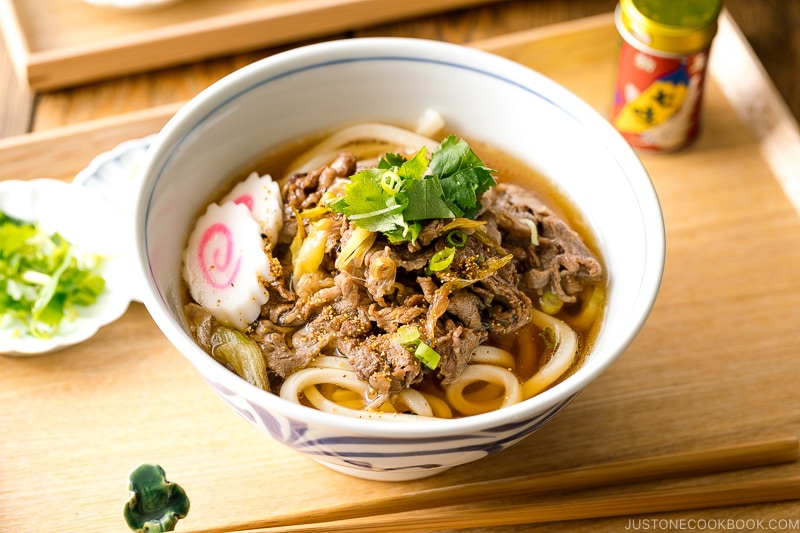
Wish to learn more about Japanese cooking? Sign up for our free newsletter to receive cooking tips & recipe updates! And stay in touch with me on Facebook, Pinterest, YouTube, and Instagram.
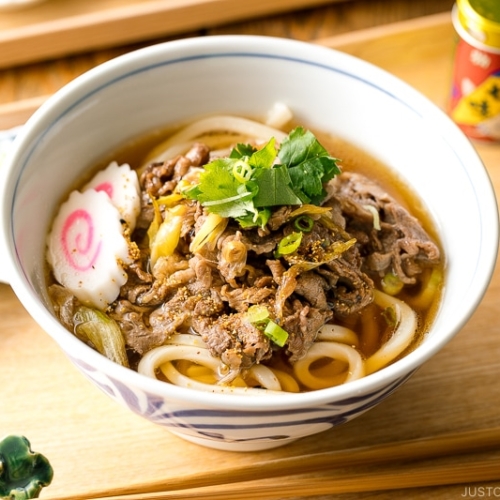
Beef Udon
Video
Ingredients
For the Broth from Scratch
- 2½ cups dashi (Japanese soup stock) (use standard Awase Dashi, dashi packet or powder, or Vegan Dashi)
- 1½ Tbsp soy sauce
- 1 Tbsp mirin
- 1 tsp sugar
- ⅛ tsp Diamond Crystal kosher salt
For the Udon Noodle Soup
- ½ Tokyo negi (naga negi; long green onion) (white part only; or use 2 green onions)
- 4 sprigs mitsuba (Japanese parsley) (optional; for topping)
- 1 green onion/scallion (for topping)
- 4 slices narutomaki (fish cakes) (optional)
- 6–8 oz thinly sliced beef (chuck or ribeye) (or slice your own meat)
- 1 Tbsp neutral oil
- 2 tsp sugar
- 1 Tbsp soy sauce
- 2 servings udon noodles (1.1 lb/500 g frozen or parboiled udon noodles; 6.3 oz/180 g dry udon noodles)
For Serving
- shichimi togarashi (Japanese seven spice) (optional)
For the Broth with Mentsuyu (Optional)
- ⅓ cup mentsuyu (concentrated noodle soup base)
- 2⅓ cups water
- 1 Tbsp mirin
Instructions
- Gather all the ingredients. Bring a large pot of water to a boil for the udon noodles. Once boiling, keep it covered on low heat until you‘re ready to cook the noodles.

To Make the Broth from Scratch
- First, make 2½ cups dashi (Japanese soup stock) of your choice. (To make udon broth with mentsuyu (noodle soup base), see the instructions at the end of the recipe.) Here, I‘ll show you how to make a quick dashi using a dashi packet (you can find it on Amazon). In a medium saucepan, add 2½ cups or 600 ml water and 1 dashi packet. Bring it to a boil over medium heat.

- Simmer for 2–3 minutes. Then, squeeze the liquid from the dashi packet and discard the packet.

- Add 1½ Tbsp soy sauce, 1 Tbsp mirin, 1 tsp sugar, and ⅛ tsp Diamond Crystal kosher salt and mix it all together. Cover the pot with a lid to prevent evaporation and keep it hot. Remove it from the heat and set aside.

To Prepare the Ingredients
- Cut the white part of ½ Tokyo negi (naga negi; long green onion) diagonally into ½-inch (1.3 cm) slices. Set aside.

- Thinly slice the leaves and tender stems of 4 sprigs mitsuba (Japanese parsley)(optional).

- Cut 1 green onion/scallion into thin slices. Transfer the green onion slices and mitsuba to a small plate or bowl for topping the soup later.

- Diagonally cut 4 slices narutomaki (fish cakes). Then, cut 6–8 oz thinly sliced beef (chuck or ribeye) in half, about 1½ to 2 inches (3.8-5 cm) wide.

To Cook the Beef
- Heat the frying pan on medium heat. When it‘s hot, add 1 Tbsp neutral oil and the Tokyo negi.

- Sauté the negi until golden brown and tender. Then, add the meat and cook until it‘s no longer pink.

- Add 2 tsp sugar and 1 Tbsp soy sauce.

- Stir-fry the meat until it is well coated with the seasoning. Remove from the heat.

To Boil the Udon Noodles
- Cook 2 servings udon noodles in boiling water according to the package instructions. For frozen udon noodles, boil from frozen for 1 minute to reheat. Drain well and rinse quickly with water to remove the excess starch.

To Serve
- Divide the well-drained udon noodles into individual serving bowls and pour the hot broth over the noodles to cover.

- Place the stir-fried beef, narutomaki, green onions, and mitsuba on top. If you like it spicy, sprinkle shichimi togarashi (Japanese seven spice) on top. Enjoy!

To Store
- You can keep the stir-fried beef, udon noodles, and broth separately in airtight containers and store them in the refrigerator for up to 3 days.
To Make the Broth with Mentsuyu (Optional)
- In a medium saucepan, combine ⅓ cup mentsuyu (concentrated noodle soup base), 2⅓ cups water, and 1 Tbsp mirin and mix well. Bring the mixture to a gentle simmer over medium heat. Cover with a lid and turn off the heat. The udon broth is now ready to use.

Nutrition
Editor’s Note: This post was originally published on November 8, 2015. It’s been updated with new images and video.
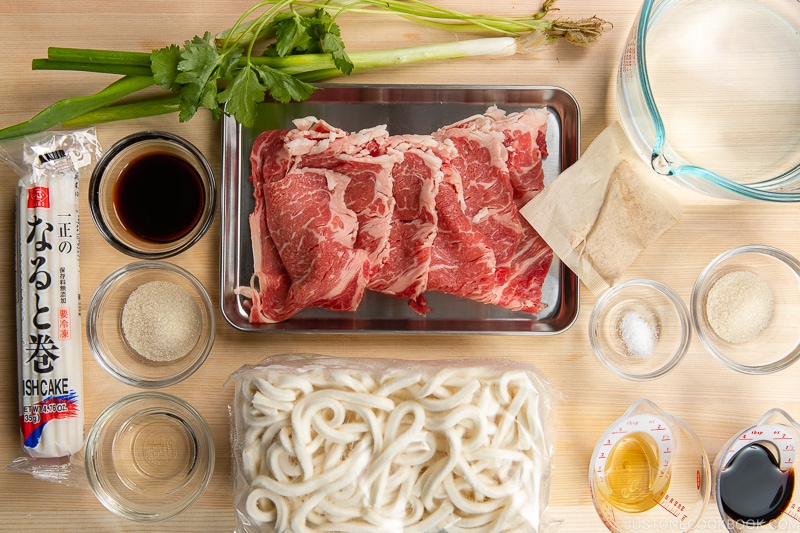
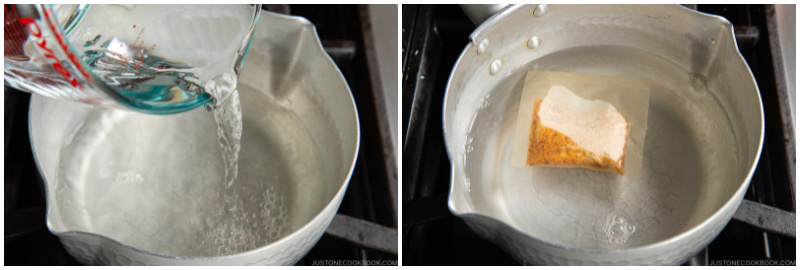
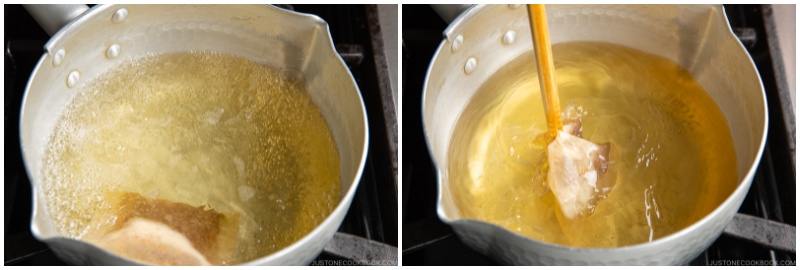
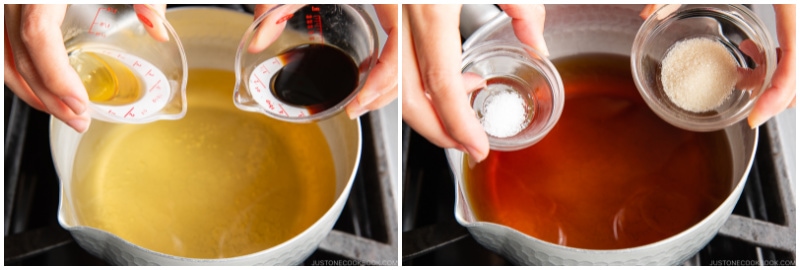
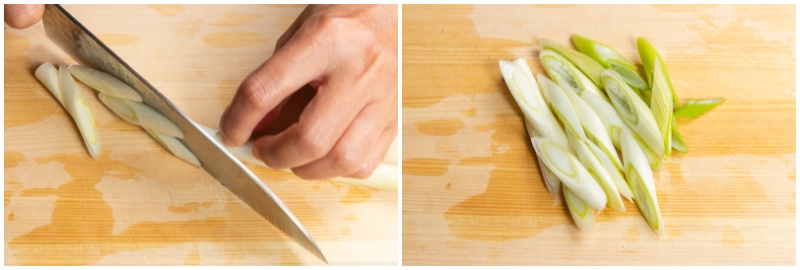
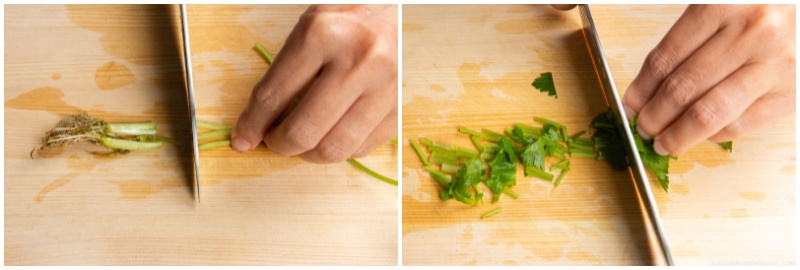
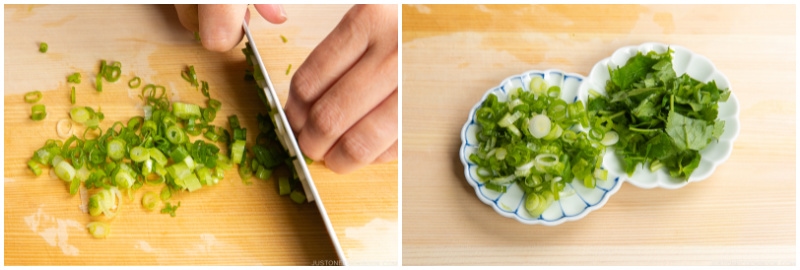
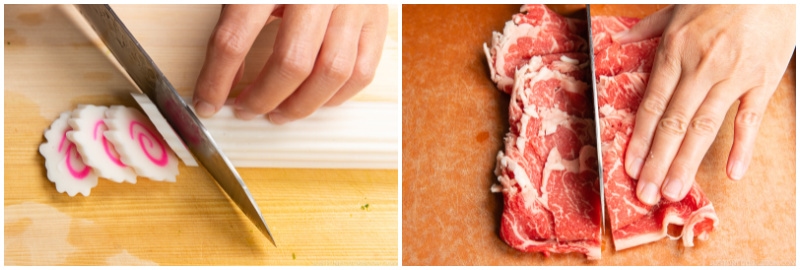
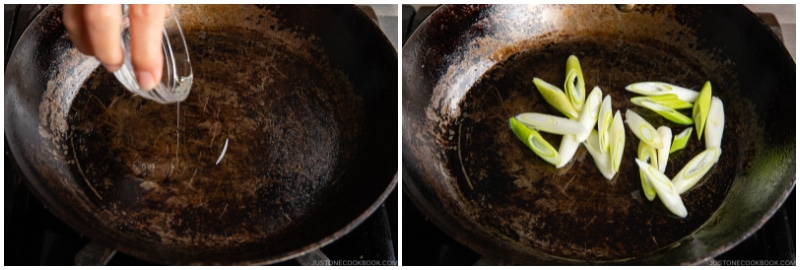
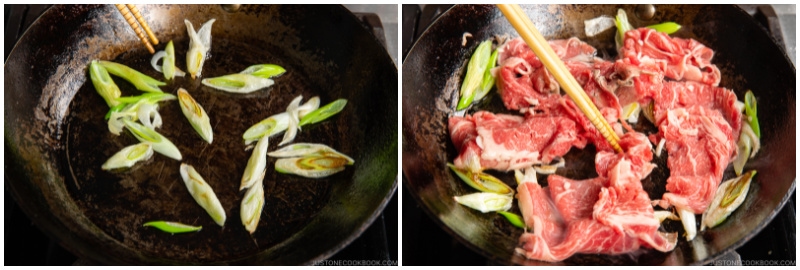
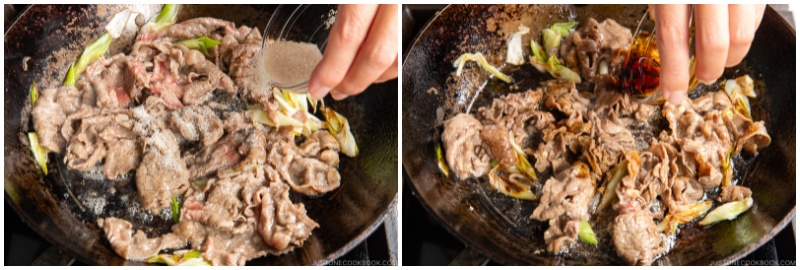
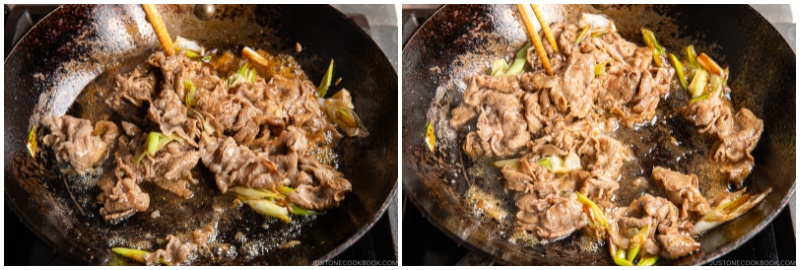
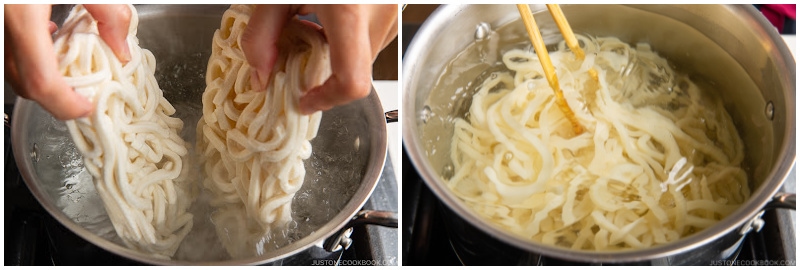
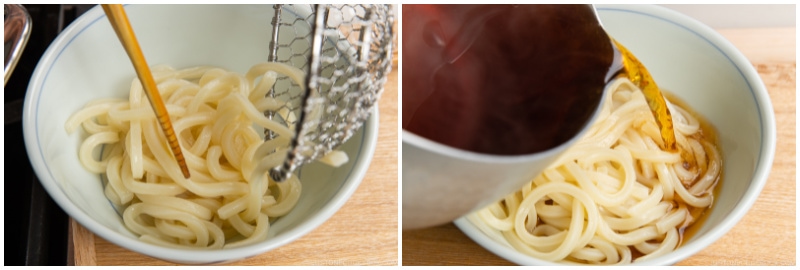
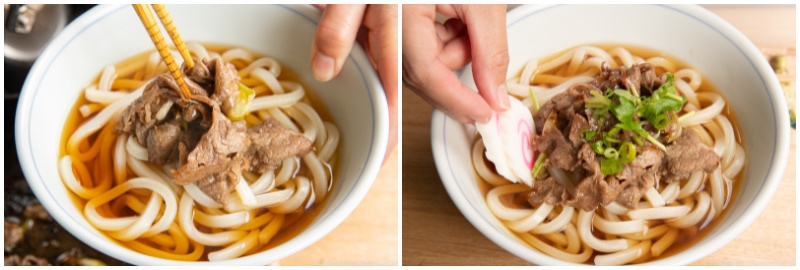
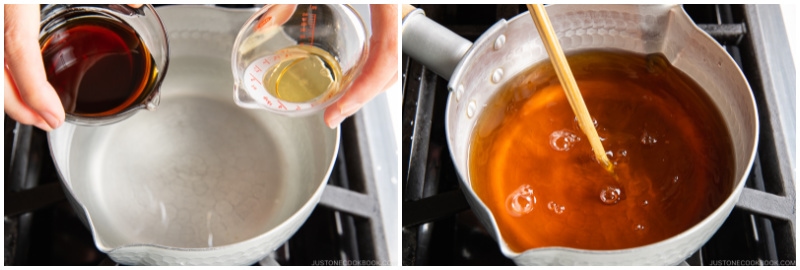










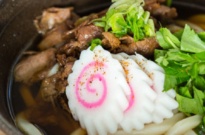
Hello Nami! If I cant find any Narutomaki or Dashi at any markets, what should I do? Is there anything that can be used instead? Thanks!
Hi Julian! Narutomaki can be hard to find if you don’t have a Japanese grocery store. You can skip and add something else for a bright color. If you can find “Kamaboko” (another type of fish cake which is more common), you can use it too.
Now dashi is different. It’s not something you can “buy” unless it’s dashi powder in box/jar or dashi packets. Check out this post to decide which method you like to use: https://www.justonecookbook.com/how-to-make-dashi-3-ways/
Hope that helps!
Thanks so much for sharing this recipe! It was so tasty and so easy. I meal-prepped it for the week by doubling the recipe, then just heating the broth and beef and adding frozen udon noodles every night. I really enjoyed it with some napa cabbage and firm tofu cubes too. It’s perfect for this colder weather!
Hi Stefanie! Thank you so much for trying this recipe! I’m so happy to hear you enjoyed this recipe throughout the week. Thank you for your kind feedback. xo
Hello,
I just made this for my mom and sister and it was incredible! The soup broth was especially delicious. The concentrated awasi dashi combined with the other ingredients made it incredibly savory. Thanks so much for posting this!
– Collin
Hi Collin! Thank you so much for trying my recipe! I’m so happy to hear your mom and sister enjoyed this recipe. Thank you for your kind feedback. 🙂
I made my own Dashi as suggested~ luckily there is a small Asian market near me! Wow this tastes just like the Niku udon I had and loved in Japan!! Actually it tastes so much better made by hand I am just so happy. I used green onion which was fine although I recommend adding some honey to the meat~ makes it sweeter! I made just one serving of noodles and only put half in. I’ll save the rest of the meat and soup for tomorrow! Thanks so much!!
Hi Katie! I’m so happy you tried this recipe with homemade dashi! You can’t achieve the delicious broth with instant dashi powder. Simple noodle soup dishes like this require good broth. 🙂 Thank you for trying this recipe and for your kind feedback!
Hi, made this soup last time,it was delicious.I’m going to make it tonight.Thanks for your easy to make receipes.Arigato
Hi Ramon! Thank you for trying this recipe! I’m so happy to hear you liked the recipe. Hope you enjoyed it tonight as well. 🙂
Made this today. It was so good. Third JOC recipe that I’ve tried and they’ve all been a hit in this Jamaican household. Also made Yakisoba and Mille-Feuille Nabe. Thanks Nami.
Hi Rochelle! I’m so happy to hear you liked this recipe! I’m super excited to hear that you’re cooking Japanese food at Jamaican household. 😀 Thank you for your kind feedback. xoxo
I’m constantly using this website for recipes – my husband is Japanese and prefers Japanese food overall, and every recipe I follow gets an enthusiastic “うまい!” so thank you for that!
I just wanted to say, I’ve tried this recipe with both light and dark soy sauce, and I’m of the opinion that the dark suits the meat better. My husband’s kansai taste disagrees, but to each his own!
Hi NumaKuri! Thank you so much for your kind feedback on dark soy sauce and I really appreciate it. I’m happy to hear your Japanese husband enjoy the recipes too. 🙂 ありがとう!
Thank you so much for this recipe!! I made this tonight for my father in law. He’s currently undergoing treatment for his cancer and so doesn’t have much of an appetite. His favorite food is udon and he’s been missing his favorite udon restaurant, Marukame Udon in Hawaii. I surprised him with homemade udon tonight using your recipe and he LOVED it. He ate an entire bowlful! He said it’s even better than Marukame Udon. Lol! Thank you so much for sharing your recipe so that I could make my father in law this special treat. It really made his day. I can’t wait to try more of your recipes!
Hi Youngmi! I’m so happy to hear you tried this recipe and your father in law enjoyed it. Your kind feedback meant so much to me. Wishing your father in law the best. xo
Hi Nami,
Just tried this wonderful recipe tonight using bottled dashi. Got a rave review from my husband. He used to order tempura udon all the time but this beef udon is just as delicious and it is super easy to make thanks to you, Nami san. I would recommend all the novice cooks out there to try making this dish. This is a true no fail recipe.
Arigato Gozaimasu,
With love from Thailand
Hi Natcha! I’m so happy to hear that your husband enjoyed this recipe! It’s a lot easier than tempura udon. 😉 Thank you for your kind feedback!
Hi Nami. This is a cyber hug thank you. I love your site. Take care.
Hi Eric! Awww thank you!!! I’m so happy to hear you like my site. Thank you for your support! xoxo
This recipe was simple and tasted great! I followed the recipe to the letter and my family commented that it was as good as restaurant-made 肉うどん!
Hi Micah! Thank you for trying this recipe and I’m happy to hear you and your family enjoyed it! Arigato!! 🙂
Hi Nami,
Is it possible to substitute the beef with pork? Sliced beef is super pricey here.. T____T
Hi Reen! Sure you can do that! 🙂
Hi! I’m so excited to try this, but I had one question..would it be possible to replace beef with tofu
Hi G B, Sure, you can do that! If you are interested in Tofu with Udon, Nami has another recipe for you to try. https://www.justonecookbook.com/vegetarian-udon/
Thank you very much for trying recipes!🙂
I have made this two times now. This time I added some bok choi to the boiling dashi. Both times I have substituted soba for udon noodles. However it tastes great. Definitely comfort food. I suspect the thick, chewiness of the udon would make it even more a comfort food, so perhaps I will try that next time. Love your recipes. Thanks for sharing them.
Hi Kathy! Soba works too! I hope you try with udon next time! Thank you so much for trying this recipe and leaving the kind feedback. 🙂
Just made this for my udon crazy kids and they loved it! Thanks so much for posting this delicious recipe. Keep up the great work!
Hi Ai! I’m happy to hear your children enjoyed it! My daughter is crazy about udon too. 🙂 Thank you very much for your kind words!
I love udon soups so much! Since it’s getting cold at night here in NM, this is perfect! I’ll be making it this week! As always, Nami, thank you for the great recipe.
Hi Madeline! It’s my pleasure and thanks so much for reading my blog post! It’s getting colder here in California too, so I’ll be making this more often. 🙂 Hope you enjoy the recipe! xo